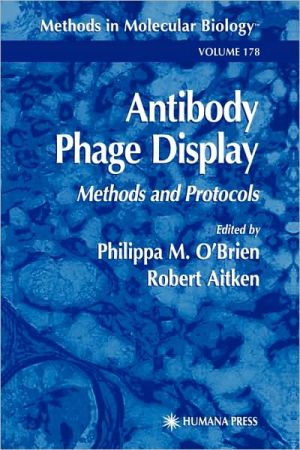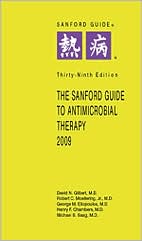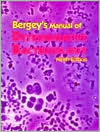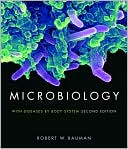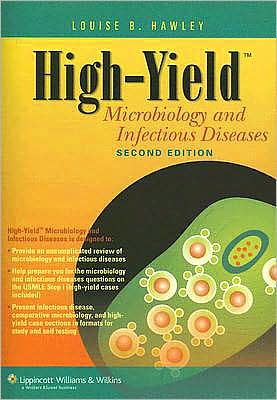Antibody Phage Display
This comprehensive collection of established antibody phage display prools features authoritative guidance that will enable the nonspecialist successfully to carry them out. Coverage spans the construction of antibody libraries, the selection of antibody clones with the desired properties, and their modification, expression, and purification. Comprehensive and highly practical, Antibody Phage Display: Methods and Prools provides biochemists, molecular biologists, and immunologists with a...
Search in google:
This comprehensive collection of established antibody phage display protocols features authoritative guidance that will enable the nonspecialist successfully to carry them out. Coverage spans the construction of antibody libraries, the selection of antibody clones with the desired properties, and their modification, expression, and purification. Comprehensive and highly practical, Antibody Phage Display: Methods and Protocols provides biochemists, molecular biologists, and immunologists with a gold-standard reference guide to the successful isolation, modification, and expression of recombinant antibodies using today's powerful phage display technology. Doody Review Services Reviewer:Eugene A Davidson, PhD(Georgetown University School of Medicine)Description:This book contains a compilation of protocols for the use of phage display. The 35 chapters cover a wide range of applications; there is a focus on immunological uses.Purpose:The goal is to provide a set of protocols for investigators wishing to apply phage display techniques. This is a popular combinatorial method and the book has broad utility.Audience:This book is intended for research laboratory personnel and is meant to function as a laboratory manual. Main users will be research fellows, PhD students and investigators. It is possible that some of the protocols could be adapted for use in an advanced laboratory course.Features:The development of combinatorial methods has resulted in an entirely new approach to drug development. The general area of peptidomimetics was founded by Geysen whose approach was strictly chemical. Recognition of the power of recombinant DNA methodology coupled with the diversity available in phage coat proteins has provided the tools of phage display. Using these methods, investigators can rapidly explore huge numbers of alternate structures aimed at ligand binding, antibody construction/modification, and related goals. This book provides how-to protocols with sufficient detail to allow application by personnel generally unfamiliar with the technique as a whole. Laboratories with problems approachable by these methods will find this book valuable. An introductory chapter serves to acquaint the reader with the basic concepts of the technology. The bulk of the book provides experimental details for a set of applications. Finally, there are several chapters on expression of designed fragments in diverse backgrounds (bacteria, yeast), a useful adjunct. Assessment:A broadly applicable and powerful technique, phage display is widely used. This book brings together key protocols and has many applications. Any laboratory with combinatorial work in mind will find this useful.
PrefacevContributorsxi1Overview of Antibody Phage-Display Technology and Its Applications12Standard Protocols for the Construction of Fab Libraries393Standard Protocols for the Construction of scFv Libraries594Broadening the Impact of Antibody Phage Display Technology: Amplification of Immunoglobulin Sequences from Species Other than Humans or Mice735Construction of Large Naive Fab Libraries876Construction of Polyclonal Antibody Libraries Using Phage Display1017Antigen-Driven Stimulation of B-Lymphocytes In Vitro1138The Recovery of Immunoglobulin Sequences from Single Human B Cells by Clonal Expansion1219Panning of Antibody Phage-Display Libraries: Standard Protocols13310Selection of Antibodies Against Biotinylated Antigens14711Isolation of Anti-Hapten Specific Antibody Fragments from Combinatorial Libraries15912Blocking Immunodominant Epitopes by Competitive Deselection17313Rescue of a Broader Range of Antibody Specificities Using an Epitope-Masking Strategy17914Screening of Phage-Expressed Antibody Libraries by Capture Lift18715Antibody-Guided Selection Using Capture-Sandwich ELISA19516Proximity-Guided (ProxiMol) Antibody Selection20117Isolation of Human Monoclonal Antibodies Using Guided Selection with Mouse Monoclonal Antibodies20718Selecting Antibodies to Cell-Surface Antigens Using Magnetic Sorting Techniques21919Isolation of Human Tumor-Associated Cell Surface Antigen-Binding scFvs22720Subtractive Isolation of Single-Chain Antibodies Using Tissue Fragments23521Selection of Antibodies Based on Antibody Kinetic Binding Properties24522Selection of Functional Antibodies on the Basis of Valency25523Two-Step Strategy for Alteration of Immunoglobulin Specificity by In Vitro Mutagenesis25924Targeting Random Mutations to Hotspots in Antibody Variable Domains for Affinity Improvement26925Error-Prone Polymerase Chain Reaction for Modification of scFvs28726Use of Escherichia coli Mutator Cells to Mature Antibodies29527Chain Shuffling to Modify Properties of Recombinant Immunoglobulins30328Generation of Bispecific and Tandem Diabodies31729High-Level Periplasmic Expression and Purification of scFvs33330Periplasmic Expression and Purification of Recombinant Fabs34331Expression of Antibody Fragments in Pichia pastoris34932Expression of V[subscript HH] Antibody Fragments in Saccharomyces cerevisiae35933Intrabodies: Targeting scFv Expression to Eukaryotic Intracellular Compartments36734Expression of scFvs and scFv Fusion Proteins in Eukaryotic Cells37935Expression of Antibody Fab Fragments and Whole Immunoglobulin in Mammalian Cells389Index397
\ From The CriticsReviewer: Eugene A Davidson, PhD(Georgetown University School of Medicine)\ Description: This book contains a compilation of protocols for the use of phage display. The 35 chapters cover a wide range of applications; there is a focus on immunological uses.\ Purpose: The goal is to provide a set of protocols for investigators wishing to apply phage display techniques. This is a popular combinatorial method and the book has broad utility.\ Audience: This book is intended for research laboratory personnel and is meant to function as a laboratory manual. Main users will be research fellows, PhD students and investigators. It is possible that some of the protocols could be adapted for use in an advanced laboratory course.\ Features: The development of combinatorial methods has resulted in an entirely new approach to drug development. The general area of peptidomimetics was founded by Geysen whose approach was strictly chemical. Recognition of the power of recombinant DNA methodology coupled with the diversity available in phage coat proteins has provided the tools of phage display. Using these methods, investigators can rapidly explore huge numbers of alternate structures aimed at ligand binding, antibody construction/modification, and related goals. This book provides how-to protocols with sufficient detail to allow application by personnel generally unfamiliar with the technique as a whole. Laboratories with problems approachable by these methods will find this book valuable. An introductory chapter serves to acquaint the reader with the basic concepts of the technology. The bulk of the book provides experimental details for a set of applications. Finally, there are several chapters on expression of designed fragments in diverse backgrounds (bacteria, yeast), a useful adjunct. \ Assessment: A broadly applicable and powerful technique, phage display is widely used. This book brings together key protocols and has many applications. Any laboratory with combinatorial work in mind will find this useful.\ \ \ \ \ From The CriticsReviewer: Eugene A Davidson, PhD(Georgetown University School of Medicine) \ Description: This book contains a compilation of protocols for the use of phage display. The 35 chapters cover a wide range of applications; there is a focus on immunological uses.\ Purpose: The goal is to provide a set of protocols for investigators wishing to apply phage display techniques. This is a popular combinatorial method and the book has broad utility.\ Audience: This book is intended for research laboratory personnel and is meant to function as a laboratory manual. Main users will be research fellows, PhD students and investigators. It is possible that some of the protocols could be adapted for use in an advanced laboratory course.\ Features: The development of combinatorial methods has resulted in an entirely new approach to drug development. The general area of peptidomimetics was founded by Geysen whose approach was strictly chemical. Recognition of the power of recombinant DNA methodology coupled with the diversity available in phage coat proteins has provided the tools of phage display. Using these methods, investigators can rapidly explore huge numbers of alternate structures aimed at ligand binding, antibody construction/modification, and related goals. This book provides how-to protocols with sufficient detail to allow application by personnel generally unfamiliar with the technique as a whole. Laboratories with problems approachable by these methods will find this book valuable. An introductory chapter serves to acquaint the reader with the basic concepts of the technology. The bulk of the book provides experimental details for a set of applications. Finally, there are several chapters on expression of designed fragments in diverse backgrounds (bacteria, yeast), a useful adjunct. \ Assessment: A broadly applicable and powerful technique, phage display is widely used. This book brings together key protocols and has many applications. Any laboratory with combinatorial work in mind will find this useful.\ \ \ From The CriticsThis volume collects established antibody phage display protocols together with guidance that will allow the nonspecialist to carry them out successfully. Extensive notes discuss pitfalls to avoid and offer alternative methods to suit special research situations. The 35 contributions offer topics including the construction of antibody libraries, the selection of antibody clones with the desired properties, and modification, expression, and purification. An overview surveys the current status of the field and the future of the technology. Edited by Philippa M. O'Brien and Robert Aitken of the U. of Glasgow. Plastic spiral binding. Annotation c. Book News, Inc., Portland, OR (booknews.com)\ \ \ \ \ 3 Stars from Doody\ \
